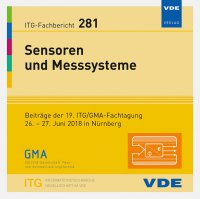Three-component fiber laser based Lidar sensor for traceable highly resolved wind vector measurements
Konferenz: Sensoren und Messsysteme - 19. ITG/GMA-Fachtagung
26.06.2018 - 27.06.2018 in Nürnberg, Deutschland
Tagungsband: Sensoren und Messsysteme
Seiten: 4Sprache: EnglischTyp: PDF
Persönliche VDE-Mitglieder erhalten auf diesen Artikel 10% Rabatt
Autoren:
Oertel, Stefan; Eggert, Michael; Gutsmuths, Christian; Mueller, Harald; Toebben, Helmut (Physikalisch-Technische Bundesanstalt, Bundesallee 100, 38116 Braunschweig, Germany)
Inhalt:
Conventional monostatic wind Lidar (Light detection and ranging) systems are well-established wind speed remote sensing devices in the field of wind energy that provide reliable measurement results for flat terrain and homogeneous wind fields. These conventional wind Lidar systems use a common transmitting and receiving unit, and become unacceptably inaccurate as the wind fields become increasingly inhomogeneous due to their spatial and temporal averaging procedure (large measurement volume) that is inherent to the monostatic measurement principle. The new three-component fiber laser-based wind Lidar sensor developed by the Physikalisch-Technische Bundesanstalt (PTB) uses one transmitting unit (fiber laser) and three receiving units to measure the velocity vector of single aerosols in a spatially highly resolved measurement volume in heights from 5 m to 250 m with a resolution of about 0.1 m/s. Thus, in contrast to conventional systems, the so-called bistatic Lidar enables wind vectors to be determined without any assumptions concerning the homogeneity of the wind field. This independence from environmental conditions allows the new Lidar system to be used for high-precision wind vector measurements for applications in the fields of wind energy and meteorology with reduced measurement uncertainty. At PTB, the aim is to use the bistatic wind Lidar as a traceable reference standard to calibrate other remote sensing devices. To this end, a new, specially designed wind tunnel has been erected on a platform at a height of 8 m; this allows the new wind Lidar to be positioned below the wind tunnel test section to be validated for wind vector measurements that are traceable to the SI units.


